The lonely death of B Bira, Thai racing prince, adventurer and Olympian
Thai royal Prince 'B Bira' was an accomplished racer, an aviator, an Olympian and gifted artist. And yet, after a life of adventure, he died anonymously at a London Tube station, as Matt Bishop recounts
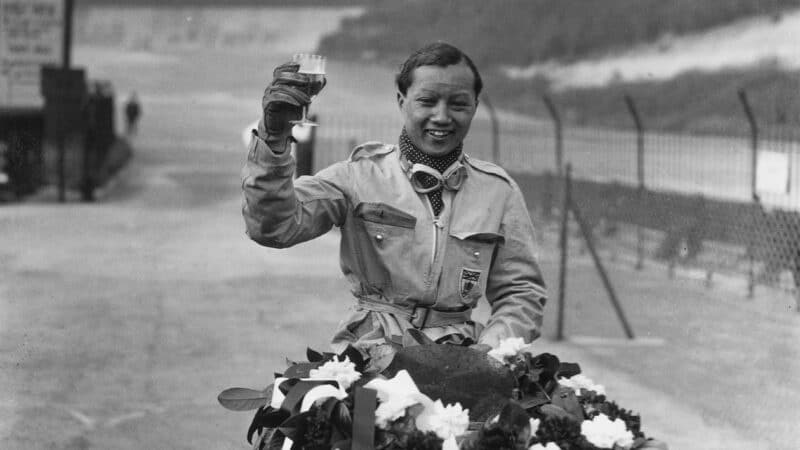
Bira toasts victory in the JCC International Trophy race at Brooklands in 1936
Hulton Archive/Getty Images
In the 75-season (1950-2024) history of the Formula 1 world championship there have so far been just two Thai drivers. One of them is current Williams ace Alex Albon, who was born in London’s Portland Hospital in March 1996 to a Thai mother, Kankamol Albon, who was sent to prison for fraud in 2012; his father Nigel Albon is British and indeed raced in the British Touring Car Championship in 1994.
And the other Thai F1 driver? Step forward His Serene Highness Prince Birabongse Bhanudej Bhanubandh of Siam (the official name of Thailand until 1939), which mouthful he abbreviated during his racing career to B Bira, who was born in Bangkok’s enormous and labyrinthine Grand Palace in July 1914, almost exactly 110 years ago, to Mom Lek Bhanubandh na Ayudha; his father was His Royal Highness Prince Bhanurangsi Savangwongse Vongsevoradej. Like Albon, he was educated at public school in England, Eton in Bira’s case.
Albon has not (yet) won an F1 grand prix, but he has stood on two F1 grand prix podiums, at Mugello and Sakhir in 2020, the second of his two seasons as a Red Bull driver. Bira won a number of significant races in the 1930s, earning the much coveted BRDC Road Racing Gold Star in 1936, 1937, and 1938, but he never won a world championship-status F1 grand prix, although he scored two podium finishes in non-championship F1 grandes épreuves, at Reims and Monza in 1949, and two wins in lesser non-championship F1 races, at Goodwood in 1951 and at Chimay in 1954. His final victory of any note came at Ardmore, New Zealand, in 1955, where and when he beat a decidedly mixed field, advantaged as he was by his state-of-the-art Maserati 250F F1 car, ranged against great drivers in decent cars (eg, Jack Brabham in a Cooper T23 ‘Redex Special’), good drivers in average cars (eg, Ross Jensen in a heavily modded Triumph TR2), and indeed veteran eccentrics in old and oddball cars (eg, George Smith in a 1939 Alfa Romeo Bimotore ‘Gee Cee Ess’ powered by a 5.6-litre Chrysler Fireball Hemi V8). If you are interested in a further arcane detail, you may like to know that Smith was a big man – OK, fat – who made a habit of eating apples during races and hurling the cores at flag marshals as he sped past them.
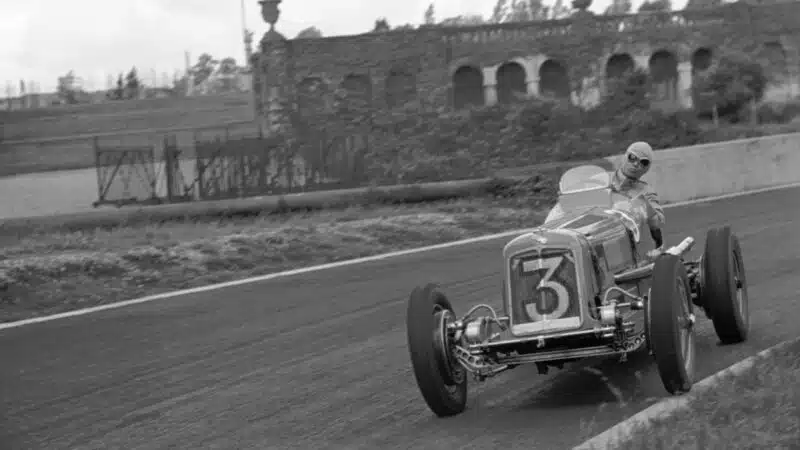
Bira in ERA at Crystal Palace in 1939
Klemantaski Collection/Getty Images
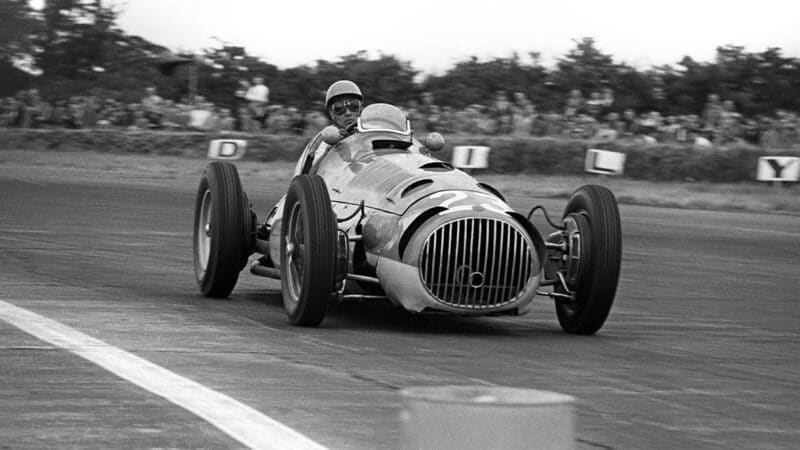
Post-war, in OSCA at Silverstone
GP Library/Getty Images
Bira’s mother never went to prison, but her son was no stranger to controversy, not least because he was married six times to five women. Yes, you read that correctly. He wed an Englishwoman, Ceril Heycock, in 1938, whereupon she became Princess Ceril Birabongse; they divorced in 1949; then, after four more wives, he remarried her in 1983, 34 years after their divorce. In 1992 she wrote The Prince and I: Life with Bira, the Motor Racing Prince of Siam, which is well worth reading. Its title is a nod to the 1951 Rodgers and Hammerstein musical The King and I, which was based on the life story of Bira’s grandfather, King Mongkut of Siam (full name: Phra Poramenthra Ramathibodhi Srisindra Maha Mongkut Phra Chomklao Chao Yu Hua Phra Sayam Thewa Maha Makut Witthaya Maharat), who had 39 wives and concubines, 39 sons, and 43 daughters. “I found him [Bira] incredibly good-looking,” Ceril wrote. “He was beautifully proportioned, with slim waist and hips, broad shoulders, and very strong arms and legs. He had smooth, pale, gold skin, and his black hair shone.”
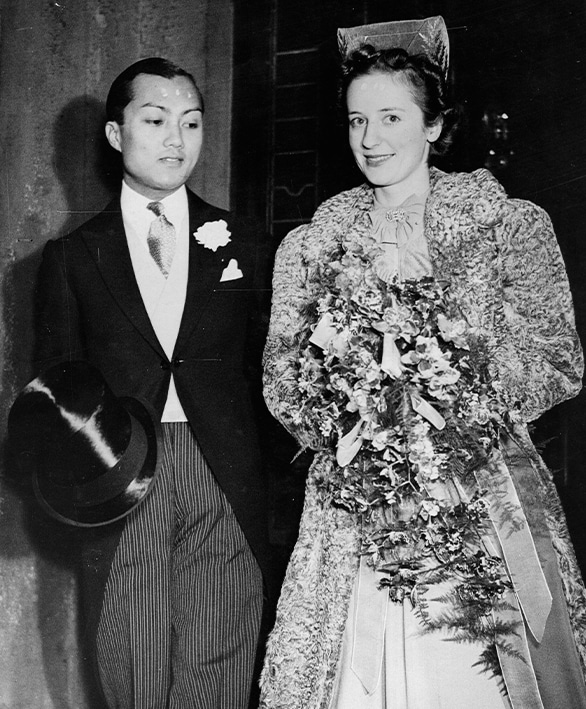
Bira and Ceril Haycock at their first wedding in 1938
Fox Photos/Getty Images
If one wife was not enough to satisfy Bira, neither was one daredevil pastime. After he hung up his F1 helmet in 1955, he became a yachtsman, competing in four Olympic Games: Melbourne 1956, Rome 1960, Tokyo 1964, and Munich 1972, by which time he was 58. If you are interested in yet another arcane detail, you may like to know that in the Rome 1960 Games he competed against a fellow F1 driver turned Olympic yachtsman, Roberto Mieres, who narrowly beat him. Mieres finished 17th, Bira 19th.
In World War Two, based in Cornwall since his native Thailand was occupied by the Japanese, Bira had been a member of the Home Guard, drawing on his skill as an amateur glider pilot to instruct new recruits to the Air Training Corps, part of the Royal Air Force. So you could say that he did his bit to help win the Battle of Britain. “Never in the field of human conflict was so much owed by so many to so few,” said Winston Churchill, Bira being one of the few – at a stretch, admittedly. After the war Bira continued to fly for fun, more than once piloting his own tiny twin-engined Miles Gemini light aircraft from London to Bangkok. When you consider that its maximum speed was just 135mph (217km/h), you will appreciate the magnitude of the task he set himself. Oh and he was also a gifted sculptor, in his youth having been a pupil of Charles Wheeler, who designed the facade of the Bank of England and the western fountain figures in Trafalgar Square; some of Bira’s finer works were exhibited at the prestigious Royal Academy of Arts on Piccadilly.
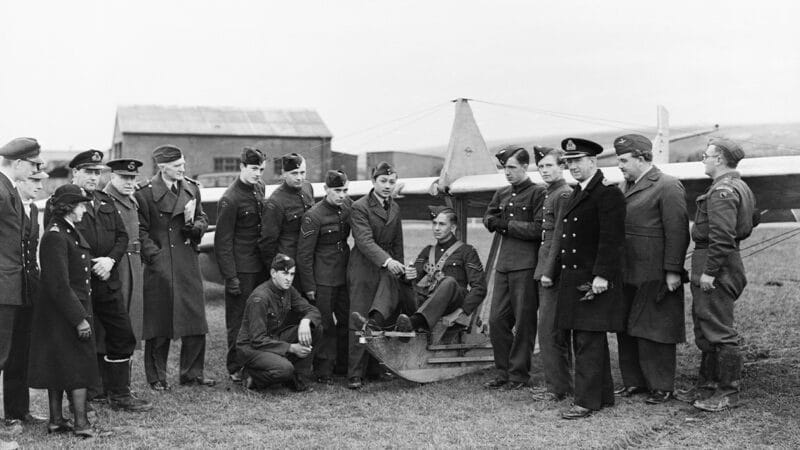
Bira, (standing, centre) teaching air cadets in 1944
Imperial War Museums via Getty Images
By the mid-1980s the old adventurer had settled and retired in west London. On December 23, 1985, even though he had met with many more triumphs than disasters during his splendidly storied life, and had treated those two imposters just the same, he finally shuffled off this mortal coil in an incongruously quiet if abrupt manner, cut down by a sudden cardiac arrest at London’s Barons Court tube station.
All deaths are sad. Some are more poignant than others. I find the circumstances of Bira’s intensely moving. None of his fellow passengers recognised him, nor did any passers-by. When the emergency services were called, the ambulance drivers and police officers were also unable to put a name to the face of the old man who lay dead before them, for he was carrying a small amount of cash and his front-door keys but no ID.
Luckily, one of the attending policemen went through Bira’s pockets one last time and found a scribbled note in one of them, although the handwriting was in a font that he did not recognise. Had that police officer not made the effort to post that note to the foreign languages department of the University of London, who knows how long it might have taken for Bira’s body to be identified? Perhaps it never would have been, and even now we might be baffled by the mystery disappearance of a colourful and charismatic Thai royal who once raced ERAs and Maseratis, in the main, and occasionally Connaughts, Gordinis, Simca-Gordinis, and even Ferraris. But he did, and we motor sport devotees should be grateful to him for the trouble he took.
The linguists at the University of London identified the note as written in Thai, and, despite the poor quality of the faded ink, they were able to determine that it was addressed to ‘Prince Bira’ and duly passed that information to the policeman concerned. He then notified the Thai Embassy in South Kensington, whose officers realised the significance of the old man whose body was still lying unidentified in a west London mortuary. Finally, a funeral service was duly held at the beautiful Wat Buddhapadipa temple in Wimbledon, and Bira was cremated according to Thai and Buddhist traditions and customs.
The Wat Buddhapadipa temple is only a couple of miles from my Earlsfield home. I pass it often. When I do so, I always spare a thought for His Serene Highness Prince Birabongse Bhanudej Bhanubandh of Siam, or plain B Bira as he preferred to be known by racing folk, just as I remember him with affection and admiration whenever I find myself on a District Line or Piccadilly Line tube train as it passes through Barons Court station. And now you will, too, won’t you?
